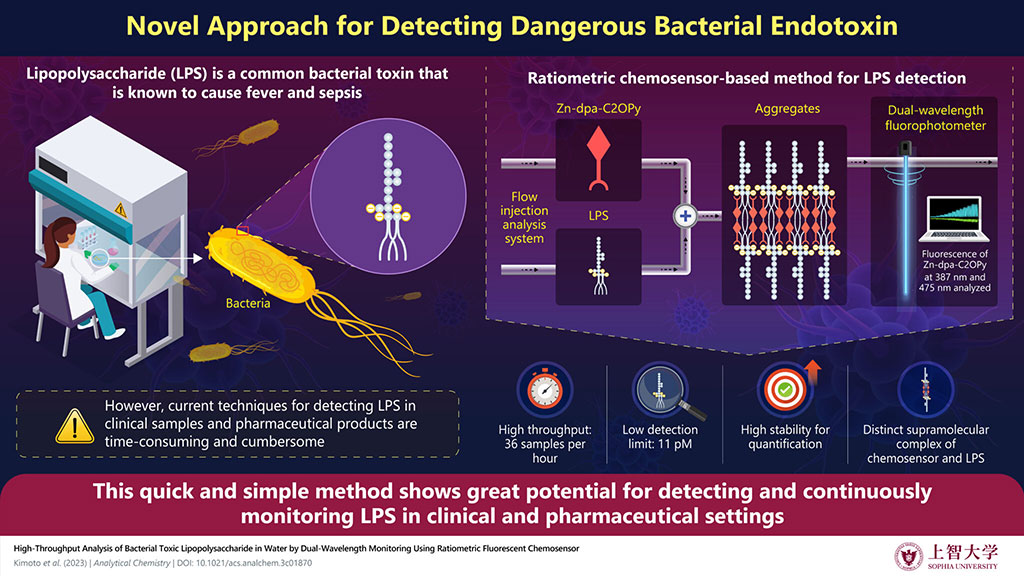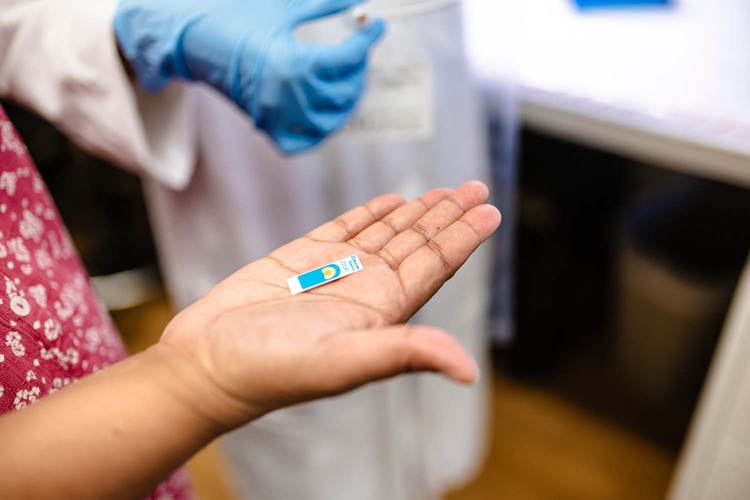Rapid Detection Technique to Improve Diagnostic Procedure for Bacterial Diseases
Posted on 06 Sep 2023
Lipopolysaccharide (LPS) is a dangerous endotoxin produced by certain bacteria and can trigger harmful immune responses in humans. However, current methods for detecting LPS are slow and complicated. To address this issue, a research team has proposed a system based on a unique fluorescent chemosensor that can detect LPS within minutes, making it ideal for on-site testing in hospitals and pharmaceutical manufacturing facilities.
The COVID-19 pandemic highlighted the need for faster pathogen and toxin screening methods. One such toxin is LPS, which is often referred to as "endotoxins." This molecule is found in the outer membrane of certain bacteria and can be highly harmful, causing fever, inflammation, and even organ failure in severe cases. Surprisingly, despite its prevalence, there are very few effective methods to detect LPS. The current gold standard, the limulus amebocyte lysate (LAL) test, is a manual and time-consuming process that takes several hours and is costly. Other methods for LPS detection are also slow or cumbersome, leading to delays in decision-making in healthcare and pharmaceutical settings. Researchers at Sophia University (Tokyo, Japan) have pioneered a novel approach to rapidly detect LPS in liquid samples. Their new platform has the potential to revolutionize LPS screening.

At the core of this LPS analysis system is a ratiometric fluorescent chemosensor called Zn-dpa-C2OPy. This compound was designed to selectively bind to LPS and exhibits unique fluorescent properties. When not bound to LPS, it forms small spherical vesicles that emit specific-wavelength light upon exposure to UV rays. However, in the presence of LPS, the chemosensor forms complex aggregates with the toxin in the solution. These chemosensor-LPS aggregates emit light at a different wavelength when exposed to UV rays, with their presence further confirmed using spectrometric measurements. To enable high-throughput LPS detection, the researchers combined the chemosensor with a flow injection analysis (FIA) system and a custom dual-wavelength fluorophotometer. This system allows for the easy mixing of a liquid sample with the chemosensor, and the mixture is then analyzed by the fluorophotometer to measure fluorescence changes in response to LPS. By comparing fluorescence intensities, the LPS concentration in the sample can be estimated. One of the major advantages of this system is its speed, as it only takes one minute from sample collection to obtaining results, with the capacity to process 36 samples per hour, making it exceptionally rapid and efficient.
Additionally, the chemosensor-based analysis system is highly sensitive and stable for quantifying LPS, with a detection limit of 11 pM (picomolar), surpassing other reported methods for LPS detection. The system is also simple and animal-friendly, unlike conventional LPS detection methods that use animal resources and may harm them. This makes it an excellent candidate for practical and efficient point-of-care testing for LPS and bacterial contamination in water, clinical, or pharmaceutical samples. With further advancements in this field, the threat of endotoxins can be minimized, enhancing safety in hospitals and improving diagnostic procedures for bacterial diseases.
“Based on this research, an online-endotoxin monitor will be developed and made available for use in real-life situations,” said Takeshi Hashimoto from Sophia University. “Such a monitor could be installed at pharmaceutical production sites, hospital bedsides, and intensive care units to continuously monitor endotoxin concentration in pharmaceutical products, such as water for injection, or the blood of infected patients.”
Related Links:
Sophia University














